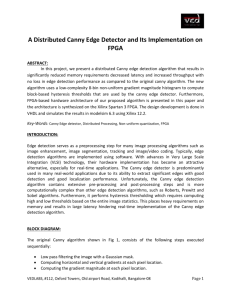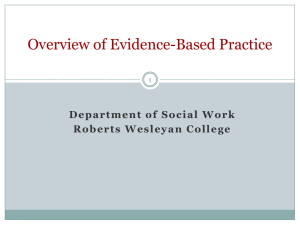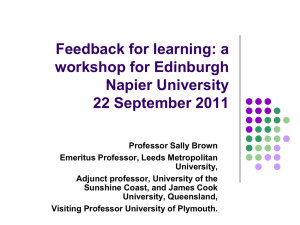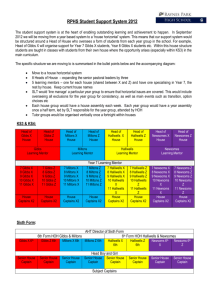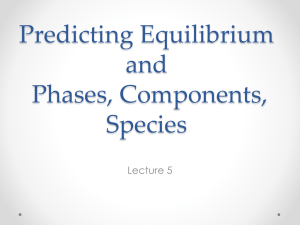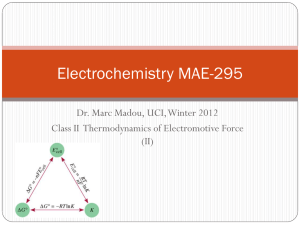Report
advertisement
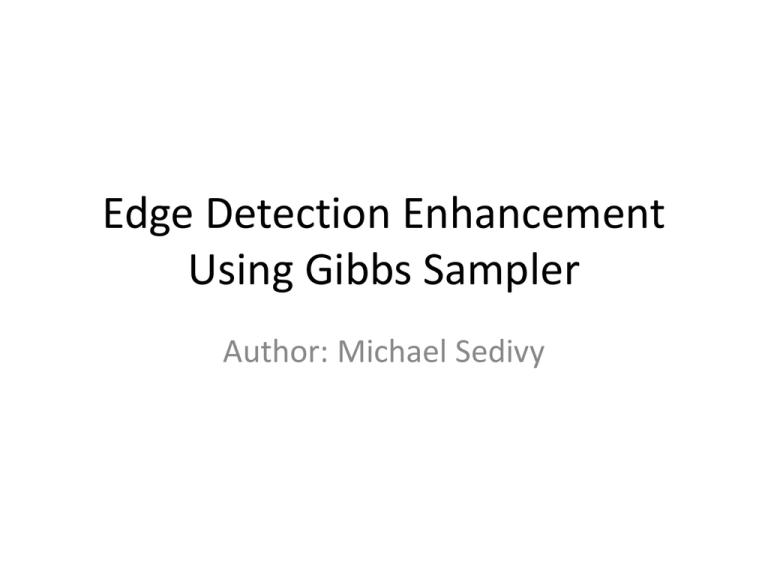
Edge Detection Enhancement Using Gibbs Sampler Author: Michael Sedivy Introduction • • • • • • Edge Detection in Image Processing MCMC and the Use of Gibbs Sampler Input Results Conclusion/Future Work References Edge Detection • Detecting Edges in images is a complex task, but it useful in other image processing problems – Feature detection/extraction – Segmentation – Picture enlargement • Many algorithms exist for edge detection – Used Canny Algorithm for its robustness (when set correctly, hard to find a better performing algorithm) – However, issues in image enhancement still exist when using Canny Edge Detector Gibbs Sampler in Edge Detection • Gibbs Sampler is a Markov Chain Monte Carlo (MCMC) algorithm – Uses a random walk throughout the dataset and a probability distribution to determine whether to accept or reject each step – Only the current step is kept when searching for the next step, and the entire dataset can be reached • In order to attempt to increase Canny Edge Detection performance, Gibbs will be performed on the magnitude value for each pixel – A positive magnitude value is generated where the difference between pixel colors (gradient) is large enough. – Canny E.D. will rule out small magnitude values, but Gibbs will strengthen those edges depending on a probability distribution and a simple proposal distribution – More edges means better results for other image processing tools that use edge images. • Purpose: to improve image enlargement techniques Inputs • Two Images: Lena and a Test Circle – Both Grayscale images, but color images could be used – In addition, each image was enlarged 4x the original size and tested Lena Image, 512 x 512 pixels Test Image, 200 x 200 pixels Results • Circle Image – not much improvement • Lena Image – improvement in detailed areas (eyes, feathers in hat) • Run Time is long for large and complex images (each pixel is scanned for each iteration of Gibbs) Original Image (512x512) Canny Edge Detection Edge Detection with Gibbs Original Image (200x200) Canny Edge Detection Edge Detection with Gibbs Original Image (2048x2048) Canny Edge Detection Edge Detection with Gibbs Original Image (800x800) Canny Edge Detection Edge Detection with Gibbs Image Enlargement, Canny Edge Detector Image Used Image Enlargement, Gibbs Enhanced Edge Detector Image Used Notice the sharpness in the detailed areas, such as the feathers and the eyes. Image Enlargement, Canny Edge Detector Image Used Image Enlargement, Gibbs Enhanced Edge Detector Image Used No noticeable improvements over a basic image. Conclusion/Future Work • Overall, Gibbs is useful for increasing results in image enlargement problems – More research needs to be done for other uses • Proposal and Probability Distributions were Gaussianbased. – Also included random generation of values for determining increase of a magnitude value. – Directed distributions could increase the efficiency in edge detection • Image can be broken up into segments – Allows for different algorithms to be applied in different areas to maximize the edges kept – MCMC is also used in segmentation problems, so could use similar code to determine algorithms for each segment References • http://en.wikipedia.org/wiki/Edge_detection • http://en.wikipedia.org/wiki/Markov_chain_ monte_carlo • http://www.tomgibara.com/computervision/canny-edge-detector • http://civs.ucla.edu/old/MCMC/MCMC_tutori al.htm • Numerical Recipes 3rd Edition
